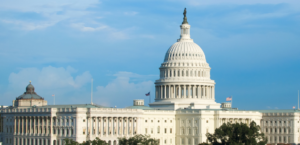Treasury Report Ignores Reality to Advance a Political Narrative

President Biden signed his executive order on competition in the United States last summer. At that time, there was optimism that this effort may produce a helpful discussion of policies which could support brewers in America of all sizes. The beer industry was pleased to roll up our sleeves and lend a hand to the important work. We submitted many suggestions for policy changes which would meet the objectives the President outlined in his executive order, and benefit the entire brewing industry. It was remarkable to see many stakeholders who critically rely on the beer industry lend their voices to the debate, resulting in a diverse coalition explaining the highly competitive nature of beer in the US today.
Unfortunately, the U.S. Department of Treasury report on “Competition in the Markets for Beer, Wine, and Spirits” is a significant disappointment which ignores the facts about this incredibly vibrant and innovative sector of the economy. The report’s authors seemed to struggle to explain away the facts, as they presented a political or ideological narrative.
The facts are undeniable – the American beer industry has grown massively over the last few decades. Since 2010 alone, we have seen more than 10,000 new breweries permitted, and today – from agriculture and manufacturing to construction and transportation, the beer industry supports more than two million American jobs and contributes more than $331 billion to the nation’s economy. The success of the beer industry is that there is now a brewery in every Congressional district. These numbers point to a thriving beer economy filled with tens of thousands of great products for consumers to enjoy. Even during the pandemic, which greatly impacted brewers and our industry partners, more than 700 new craft breweries opened.
However, instead of following a “whole of government approach” to competition issues affecting the alcohol industry, in its report, Treasury assembled a disjointed collection of perceptions, conjecture, speculation, and outdated data to support tenuous conclusions. The reader is left to conclude that the entire effort was set up to confirm preconceived notions which may be popular in an academic setting, but do not conform to the realities American brewers face.
The 64-page report ignores facts and instead pushes a narrative that does not match reality.
For example:
- Treasury conveniently omits the fact that large brewers in the US lost 17 percent of their market share over the last decade.
- Likewise, Treasury ignores the significant economic contributions of brewers as employers, job creators, product innovators, and fails to acknowledge the critical role that farmers, wholesalers, truck drivers, retailers, and others play in the industry.
- For every brewing job, an estimated 30 jobs are created.
- The beer industry has an outsized economic impact on the U.S. agricultural industry, supporting more than 37,000 jobs and generating more than $45 billion in agricultural economic output.
- Many brewing jobs are high paying union-represented jobs, directly contributing to the strength of American manufacturing and our domestic workforce.
- Treasury also ignored brewers’ voluntary work to provide calorie and nutrition information, ingredients, freshness dating, and ABV information for consumers. More than 95% of the beer volume sold by leading Beer Institute members now voluntarily provide nutritional information. No other alcohol segment can match the transparency brewers and beer importers provide to consumers.
- Treasury omits that beer prices have remained low even during historic periods of inflation and supply chain disruption. Beer price increases have trailed price increases for all products since 1985, except for the early 1990s, when the federal beer excise doubled. This trend of low beer prices continued last year, as beer’s Consumer Price Index (CPI) trailed overall CPI 1.8% to 4.7% on average in 2021.
Even the words of the report reveal fundamental flaws in arguments and conclusions. The report is replete with references that actions or behaviors “might,” “may,” or “could” adversely affect competition. These words express possibilities and theories, not certainties, yet Treasury uses them freely to support alleged adverse inferences regarding competition in the alcohol industry.
The data is clear: the beer industry is highly competitive. It is disappointing that instead of providing an objective look into a thriving industry that has seen more entrants than ever before, Treasury released an analysis that was apparently destined to reach a foregone conclusion. We encourage the Administration to engage more with beer industry stakeholders- including those in the agricultural, transportation, and labor sectors- to truly understand this thriving industry. Our bar is always open.













